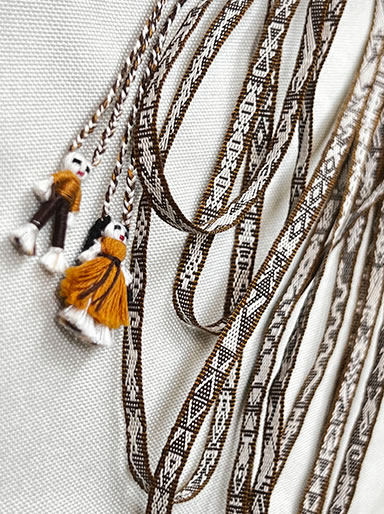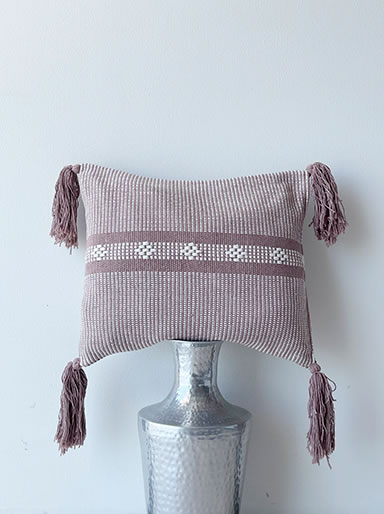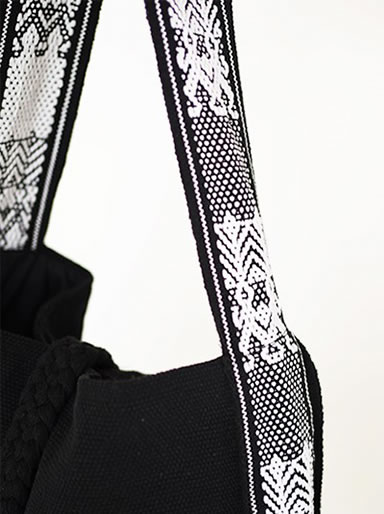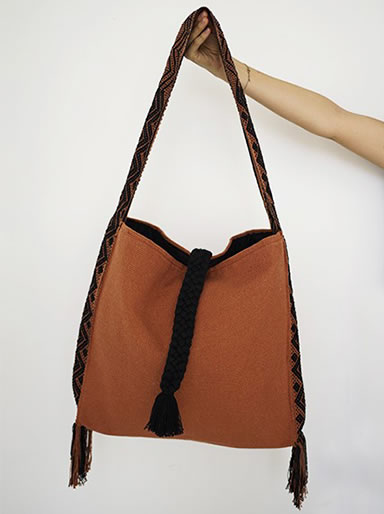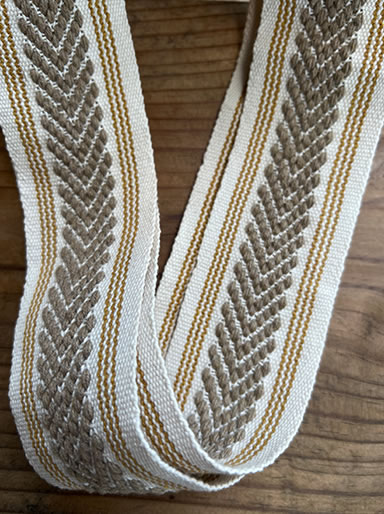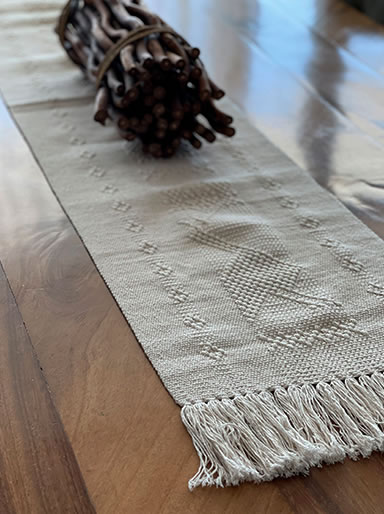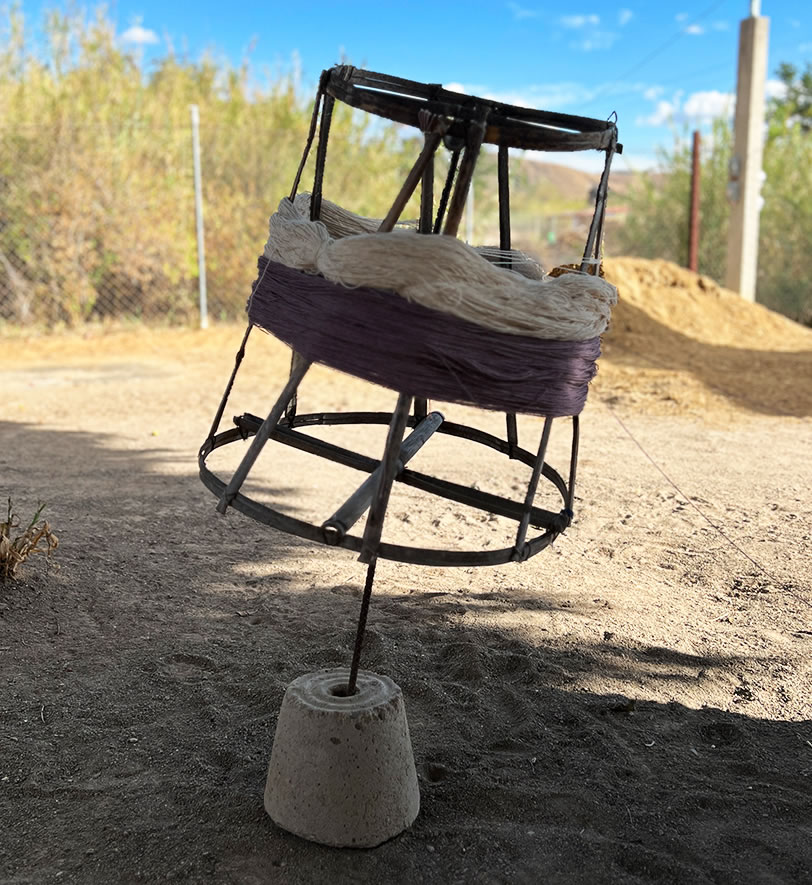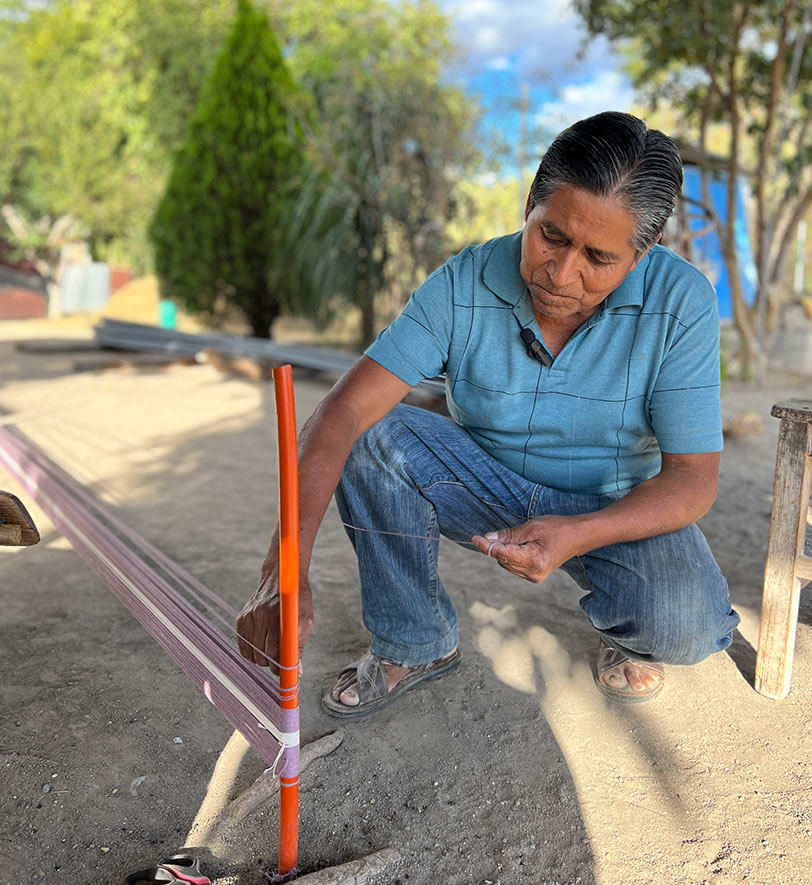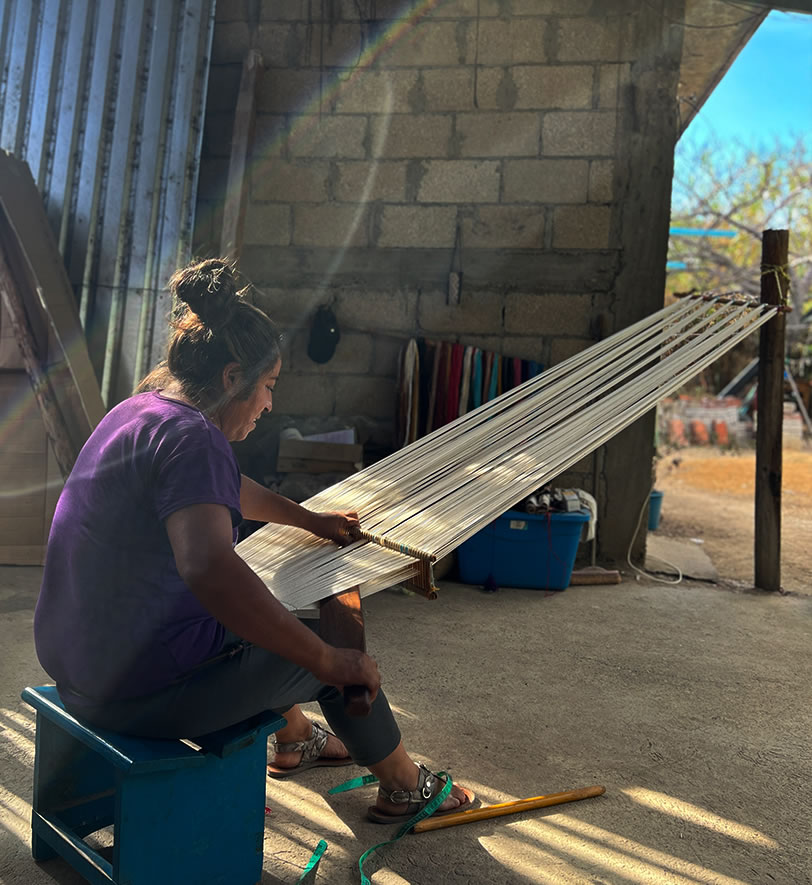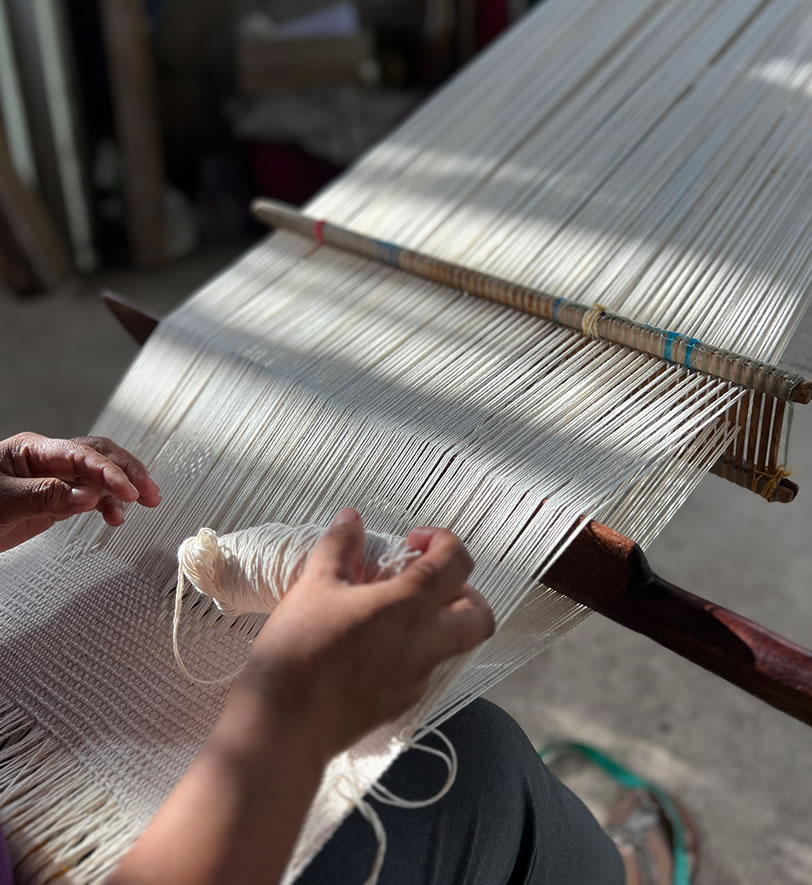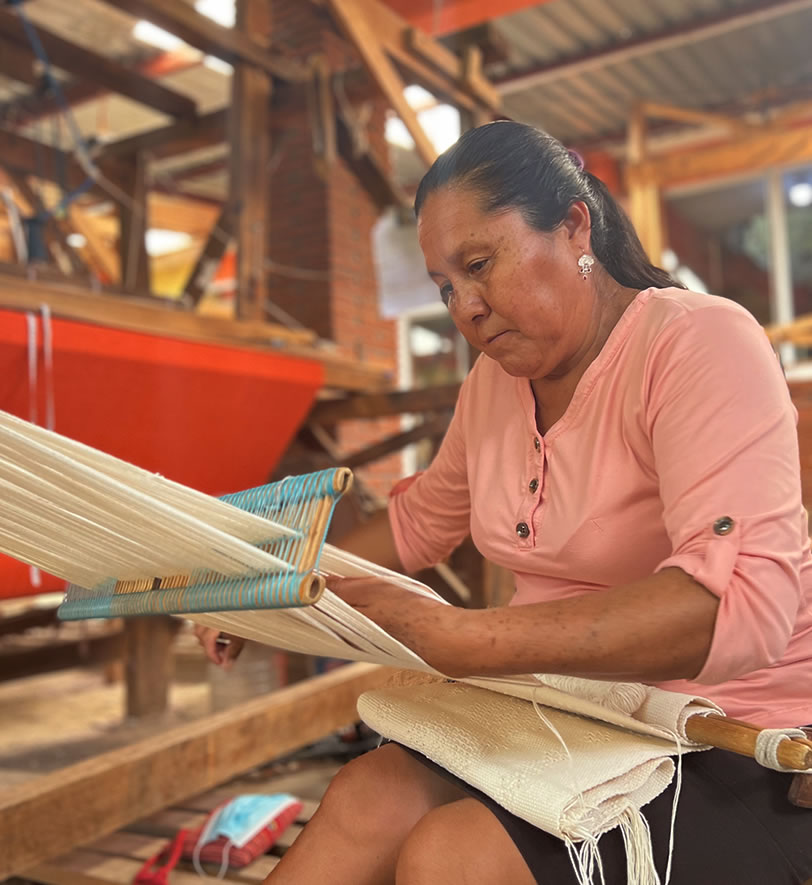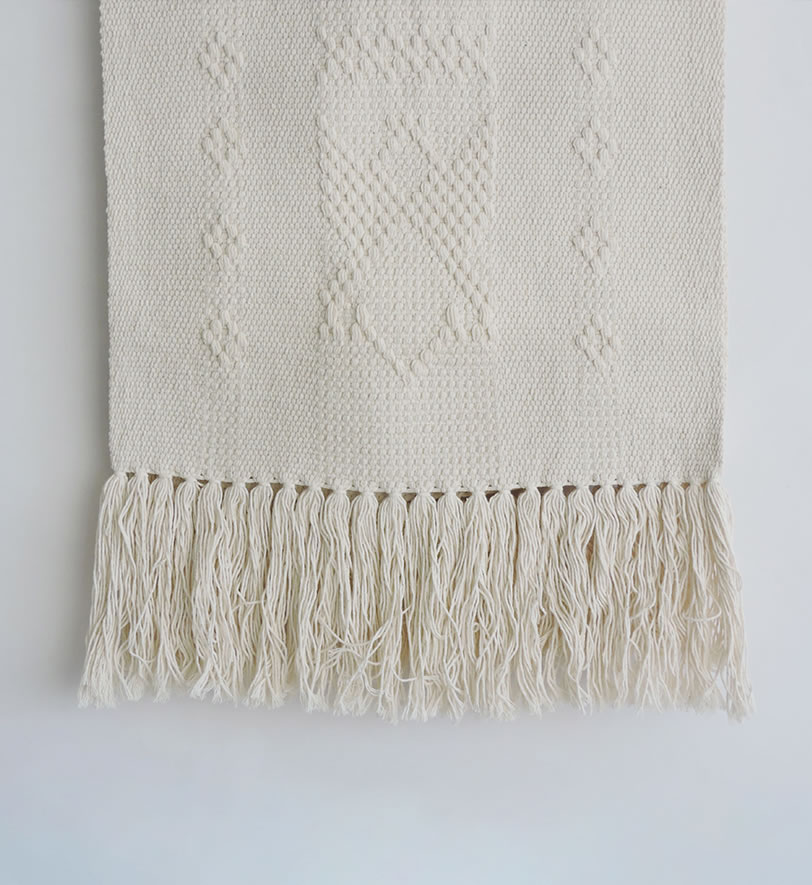History
Santo Tomas Jalieza, Oaxaca, is renowned for the talent of Zapotec women and men who combine the symbolism of their worldview with the dexterity of their hands to create canvases full of history and color.
The loom was originally crafted by women, creating belts and traditional jackets for men's clothing. Nowadays, both men and women practice this art form, creating a wide variety of pieces such as table runners, shawls, bags, wallets, and bracelets that preserve pre-Hispanic symbols with multiple meanings within their weavings.
Process
Ideation
They envision the stories that will appear on the fabric, carefully selecting the threads to weave. By choosing specific colors and patterns, they bring their creative ideas to life, infusing the textile with meaning and symbolism. Each thread is a deliberate choice, contributing to the overall narrative expressed in the woven piece.
Loom preparation
Thread by thread, they carefully arrange the warp to create the desired design and size. The width is limited by the "waist" of the artisans, but there is no limit to the length. They can use thick or thin threads, depending on the intended use of the textile. The precise arrangement of the warp ensures that the woven piece will have the exact number of threads required and will achieve the desired design and size. The choice of thread thickness depends on the purpose or function of the textile being created.
Assembled
The ends of the warp are tied to two wooden beams that provide support for the weaving. The upper end of the threads is secured to a fixed point, such as a tree, while the lower end is held with a belt around the waist of the artisan. This setup allows for the tension of the warp and provides stability for the weaving process.
Weave
The weaving process involves interlacing threads in two layers simultaneously: the warp threads (vertical threads) and the weft threads (horizontal threads). One by one, the threads are counted, separated, and woven, requiring continuous mathematical calculations to create patterns that represent their ancestral iconography. This meticulous and precise technique ensures that the design emerges as intended, with each thread contributing to the overall composition. The artisan's skill and attention to detail are essential in maintaining the pattern's symmetry and achieving the desired aesthetic outcome.
Dressmaking
Indeed, the design opportunities offered by these looms are quite special, as they allow for the creation of double-sided and durable textiles. This versatility allows artisans to explore various design possibilities, creating textiles that are not only visually appealing but also strong and long-lasting.
Jalieza, with thick and thin threads, preserves the iconography of the Zapotec culture.

